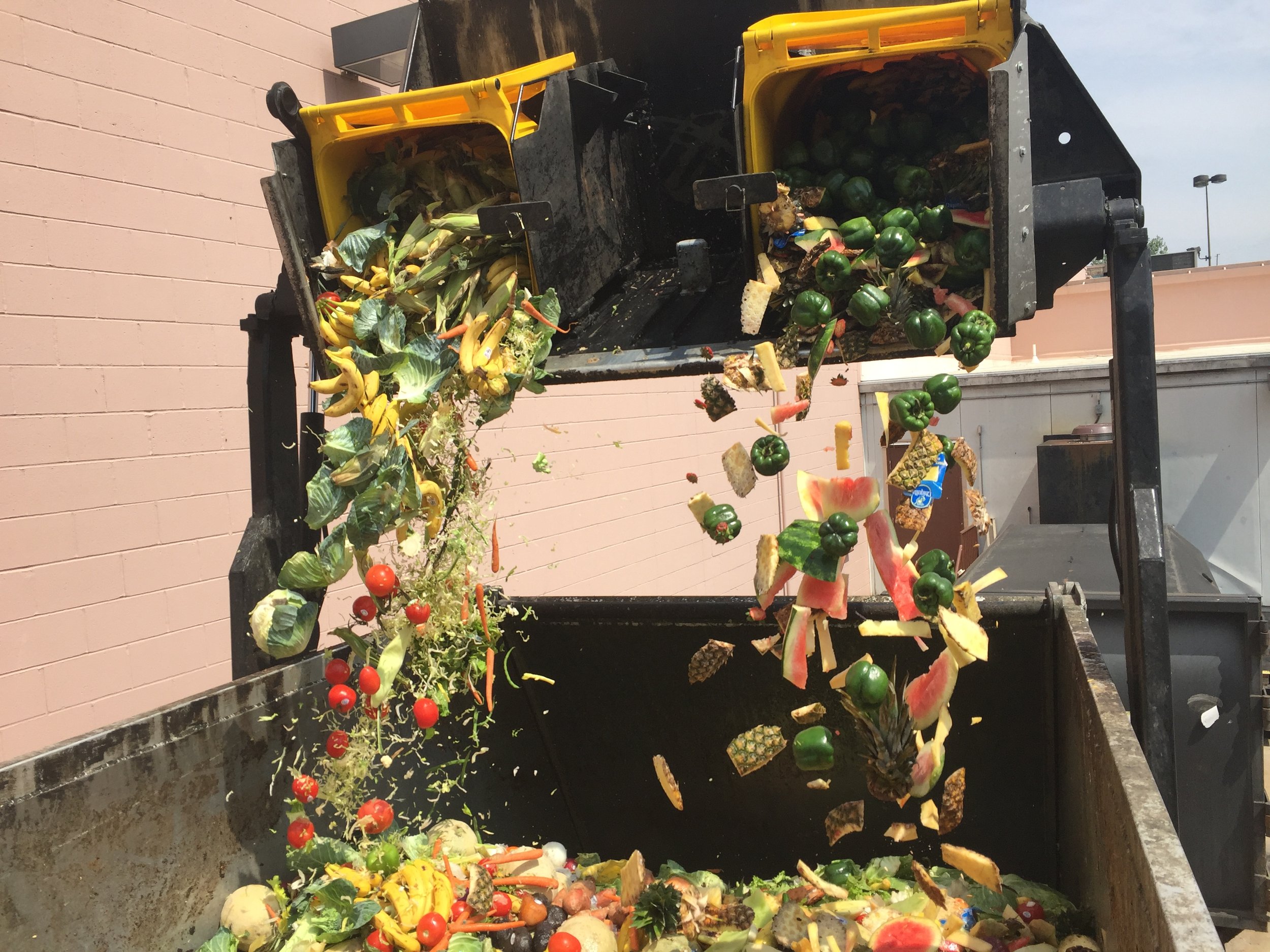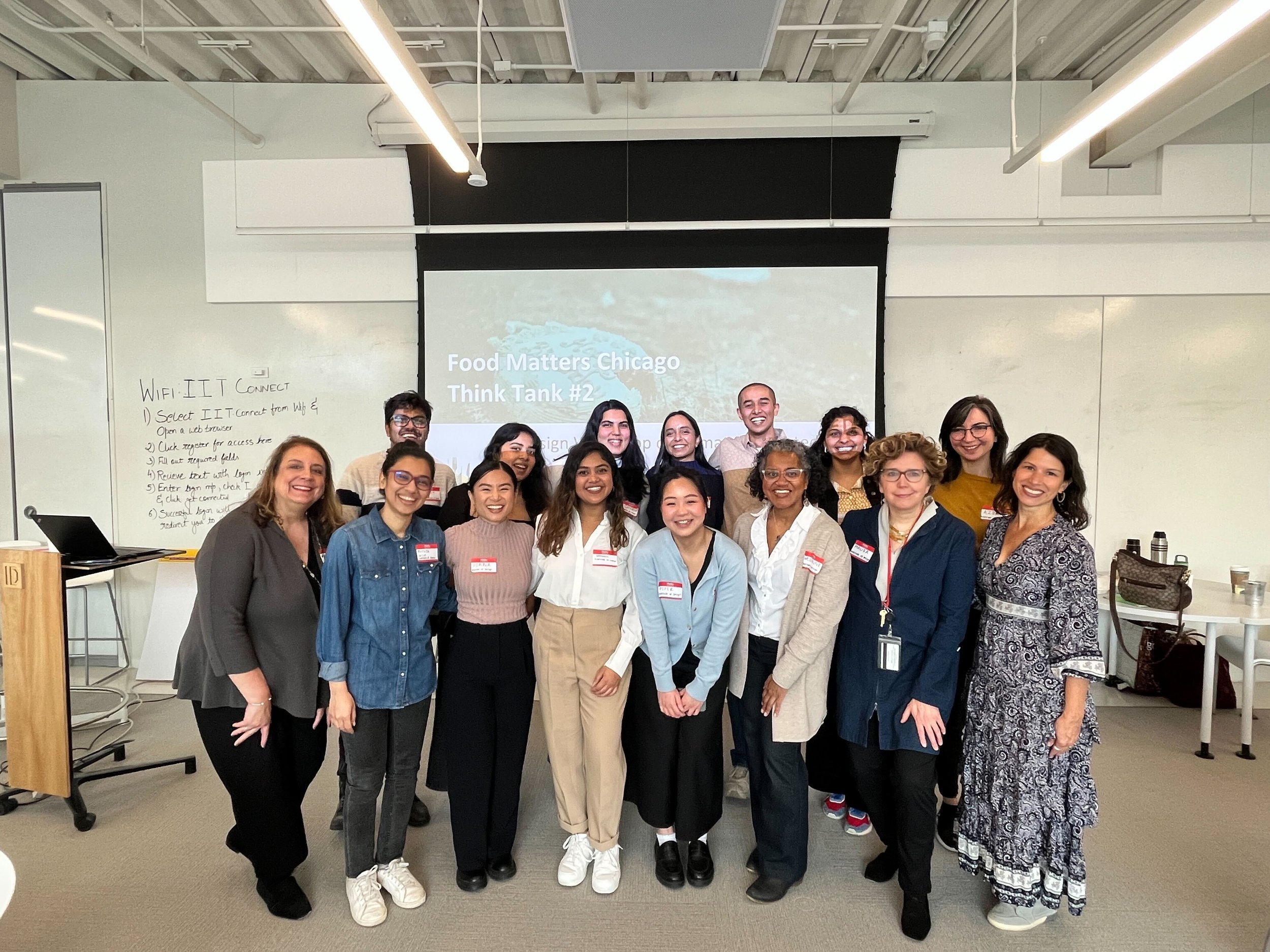Mapping Chicago’s Food System
Catalyzing collaborative innovation with visualization
Role: Designer, Facilitator, Student
Focus: Systems thinking, Facilitation Methods
Time: Jan - May ‘23 (14 weeks)
Our team at the Chicago food matters think tank
Stakeholders all around Chicago are working to reduce city-wide food waste, from food producers / processors to policymakers. But with food waste being such a complex and systems-level challenge to tackle, our team really had to lean into our facilitation and visualization skills to reveal insights that helped our stakeholders find their opportunities for action.

Every year the US wastes
133 billion lbs. of food…
…that’s equal to the annual emissions of 42 coal-fired plants.
Image Source: Illinois Food Scrap & Composting Coalition
Source: USDA - Food Waste its Links to Greenhouse Gases and Climate Change
The challenge
While there are many local organizations trying to do their part in the food waste fight, the NRDC says that Chicago is one of the slowest cities in the US for food recovery.
To aid existing efforts, our team partnered with food service providers, food waste recyclers and policymakers across the City of Chicago to identify what the biggest challenges have been for them, and where the system’s leverage points are for emerging opportunities.
How can we help Chicago’s key food partners identify their unique leverage points to collectively reduce city-wide food waste?
The approach
Facilitated three discussions with a city events caterer to identify their service flows, their view of the system and their biggest barriers to food waste reduction
Synthesized findings with other teams (working with policy makers and food recyclers) into cohesive visualizations of the Chicago-wide food waste system
Identified biggest opportunities for collaboration and impact across stakeholders
Facilitated two city-wide workshops and presented findings in order to validate insights and create space for partnerships
Food service providers identifying barriers to food waste reduction
Driving insights
Stakeholders want to improve, but there are knowledge gaps between them.
There needs to be a better way to educate people across, up, and down from in an org.
People wanted a way to visualize what success would even look like.
Communication and coordination across stakeholders is essential.
Many stakeholders only had an understanding of their own challenges, but didn’t have opportunities to see the larger system from some of the other stakeholders they have to work with for food waste.
Too often, successful food waste initiatives came from internal champions who had to educate others all across the organization.
Fighting food waste is tricky. Folks wanted a way to learn from other similar organizations so they could imagine what is possible.
Food waste management requires a lot of partnerships and collaborations across different types of organizations. When scaled up to a city level, having clear communication across stakeholders is a necessity.

Deliverables & Opportunities
Three visualizations of the food system communicated the complexities of food waste and highlighted the opportunities for cross-stakeholder alignment.
We created three of these maps for our stakeholders to share their knowledge, relevant feedback and find connections to other valuable potential partners. Not only did it help them close the communal information gaps and find cross-functional opportunities, but it also helped educate and empower others in similar positions to be more proactive in their food waste reduction. Our maps were created through the perspective of three food reduction pathways: waste reduction, food rescue, and food recycling.
Impact
These visualizations activated our stakeholders to see and prioritize their next steps in their fight to reduce food waste.
Using these maps as a level-setting tool, our stakeholders were then enabled to create more sophisticated ideas on how they can collaborate and activate their own systems to waste less. By providing additional views of the system, we were able to reframe their thinking and empower new but eager partners to join the conversation, as well as existing partners to find their next step.












